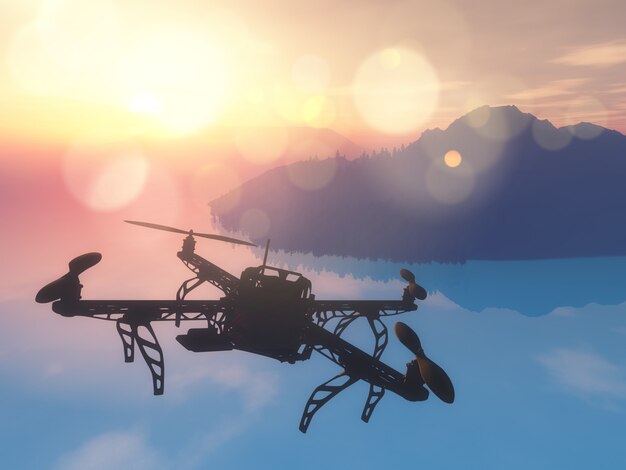
Sponsored article
The advent of Unmanned Aerial Vehicles (UAVs) has drastically transformed search and rescue operations. By providing unprecedented aerial views, UAVs enhance the ability of emergency teams to locate missing persons and assess disaster-stricken areas. This innovative technology not only speeds up the search process but also significantly improves the safety of rescue missions. As UAVs continue to evolve, their role in emergency response is becoming increasingly vital, offering solutions that were once unimaginable.
Unmanned aerial vehicle (UAV) technology is transforming the landscape of search and rescue operations with unparalleled speed and precision. One of the critical ways UAVs enhance search efficiency is by covering vast areas quickly, which reduces the time needed to locate missing persons or assess disaster-stricken regions. These aerial vehicles can fly over rugged terrains that are difficult for ground teams to traverse, offering an expansive field of vision that traditional methods cannot match. The advanced sensors and cameras on versatile UAV drone systems can spot clues and relay real-time information, making them indispensable in urgent scenarios where every second counts. By integrating with advanced mapping tools, UAVs provide detailed overviews and precise coordinates, allowing search teams to act swiftly and decisively.
Moreover, UAVs in search operations bring a new dimension of intelligence by relaying aerial views directly to command centers. This bird’s eye perspective reveals patterns and details invisible to ground-based rescuers, enhancing decision-making processes. As UAV technology continues to evolve, its role in search efficiency becomes increasingly vital, offering solutions and capabilities that redefine the boundaries of traditional search methods. From swift initial assessments to ongoing surveillance, UAVs empower rescue teams to respond faster and more effectively than ever before. To learn more about these versatile UAV drone systems, visit MADDOS.
In the realm of rescue missions, the use of UAVs has significantly enhanced safety by effectively navigating dangerous environments that would typically pose a threat to human rescuers. These advanced drones possess the ability to enter hazardous areas, whether it be due to unstable terrain or toxic exposure, without risking human life. UAVs are equipped with cutting-edge sensors and cameras that provide real-time data, giving rescue teams valuable insights into the situation at hand from a safe distance. This capability not only reduces the potential for injury or loss of life among rescuers but also speeds up the response time in critical conditions. As the deployment of drones in dangerous environments becomes more commonplace, the safety and efficiency of rescue operations continue to improve exponentially.
Additionally, UAV safety protocols ensure that these drones can deliver essential supplies such as food, water, and medical kits to isolated areas where traditional methods may fail or prove too dangerous. The ability to establish communication links through UAVs offers a lifeline to stranded individuals, enhancing their chances of survival while keeping human rescuers out of harm’s way. The integration of drones in dangerous environments allows for swift and effective delivery of aid and communication tools, revolutionizing how rescue missions are conducted. As technology advances, the role of UAVs in rescue missions is likely to expand, continually pushing the boundaries of what’s possible in terms of safety and capability.
Unmanned Aerial Vehicles (UAVs) have emerged as indispensable tools in modern search and rescue operations, primarily due to their unparalleled ability in real-time data gathering. These advanced systems leverage sophisticated sensors and cameras to conduct UAVs data collection, offering aerial perspectives that ground teams simply cannot achieve. As UAVs swiftly navigate challenging terrains or vast areas affected by disaster, they continuously relay real-time data to command centers. This instant influx of information is vital, providing an up-to-the-minute picture of the situation which is crucial for effective decision-making in search and rescue scenarios.
Real-time data provided by UAVs enhances the decision-making process by enabling rescue teams to assess conditions accurately and prioritize their actions. With immediate access to detailed environmental insights, responders can make well-informed decisions rapidly, optimizing their coordination and improving the chances of successful outcomes. In high-stake environments, timely and accurate information is the keystone of efficient search and rescue missions, underscoring the transformative impact of UAVs technology in the field.